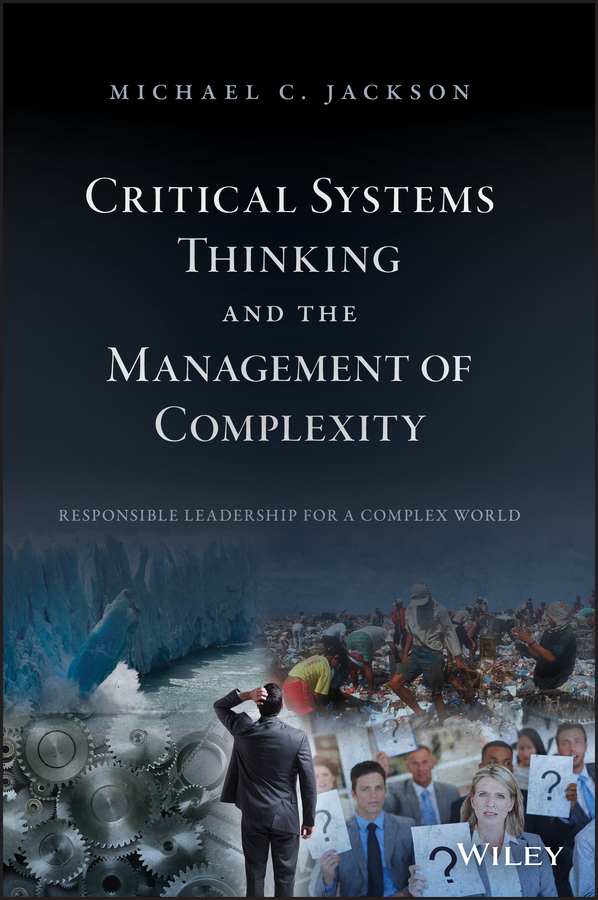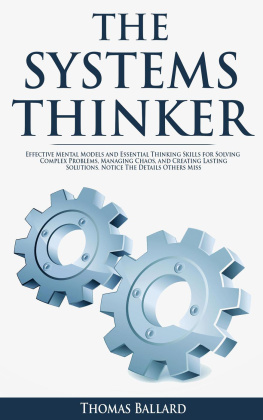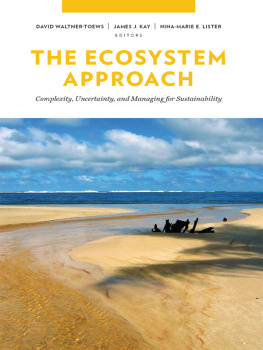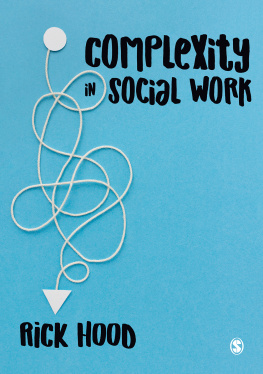
Table of Contents
List of Tables
- f06
- Chapter 4
- Chapter 5
- Chapter 8
- Chapter 10
- Chapter 14
- Chapter 15
- Chapter 18
- Chapter 20
- Chapter 21
List of Illustrations
- Chapter 6
- Chapter 7
- Chapter 8
- Chapter 9
- Chapter 10
- Chapter 11
- Chapter 12
- Chapter 13
- Chapter 14
- Chapter 15
- Chapter 16
- Chapter 17
- Chapter 18
- Chapter 20
- Chapter 21
Guide
Pages
Critical Systems Thinking and the Management of Complexity
Michael C. Jackson
Copyright
This edition first published 2019
2019 John Wiley & Sons Ltd
All rights reserved. No part of this publication may be reproduced, stored in a retrieval system, or transmitted, in any form or by any means, electronic, mechanical, photocopying, recording or otherwise, except as permitted by law. Advice on how to obtain permission to reuse material from this title is available at http://www.wiley.com/go/permissions.
The right of Michael C. Jackson to be identified as the author of this work has been asserted in accordance with law.
Registered Offices
John Wiley & Sons, Inc., 111 River Street, Hoboken, NJ 07030, USA
John Wiley & Sons Ltd, The Atrium, Southern Gate, Chichester, West Sussex, PO19 8SQ, UK
Editorial Office
9600 Garsington Road, Oxford, OX4 2DQ, UK
For details of our global editorial offices, customer services, and more information about Wiley products visit us at www.wiley.com.
Wiley also publishes its books in a variety of electronic formats and by printondemand. Some content that appears in standard print versions of this book may not be available in other formats.
Limit of Liability/Disclaimer of Warranty
While the publisher and authors have used their best efforts in preparing this work, they make no representations or warranties with respect to the accuracy or completeness of the contents of this work and specifically disclaim all warranties, including without limitation any implied warranties of merchantability or fitness for a particular purpose. No warranty may be created or extended by sales representatives, written sales materials or promotional statements for this work. The fact that an organization, website, or product is referred to in this work as a citation and/or potential source of further information does not mean that the publisher and authors endorse the information or services the organization, website, or product may provide or recommendations it may make. This work is sold with the understanding that the publisher is not engaged in rendering professional services. The advice and strategies contained herein may not be suitable for your situation. You should consult with a specialist where appropriate. Further, readers should be aware that websites listed in this work may have changed or disappeared between when this work was written and when it is read. Neither the publisher nor authors shall be liable for any loss of profit or any other commercial damages, including but not limited to special, incidental, consequential, or other damages.
Library of Congress CataloginginPublication Data applied for
ISBN: 9781119118374
Cover design by Wiley
Cover image: laflor/Getty Imagesgroup of people, John Lund/Getty Imagesmedal gears, DNY59/Getty Imagesman looking at wall, Brasil2/Getty Imageslandfill, DurkTalsma/Getty Imagesiceberg
Dedication
To Pauline, Christopher and Richard:
This book is what I think. It is not all I know.
That, I hope, I have conveyed to you in other ways.
Dust as we are, the immortal spirit grows
Like harmony in music; there is a dark
Inscrutable workmanship that reconciles
Discordant elements, makes them cling together
In one society.
Wordsworth (The Prelude, 1850)
Preface
There is a considerable debate about how to describe the modern world. Alternatives include the following: a global village, postindustrial society, consumer society, media society, network society, risk society, late capitalism, high modernity, postmodernity, liquid modernity, and the information age. To some, the new names just signal the rapid acceleration of changes in society that started to emerge between the sixteenth and eighteenth centuries. To others, we have crossed a threshold and entered a completely new era. What no one doubts is that things have become much more complex. We are entangled in complexity.
An IBM survey of more than 1500 Chief Executive Officers worldwide states:
The world's private and public sector leaders believe that a rapid escalation of complexity is the biggest challenge confronting them. They expect it to continue indeed, to accelerate in the coming years.
()
An OECD report begins:
Complexity is a core feature of most policy issues today; their components are interrelated in multiple, hardtodefine ways. Yet governments are illequipped to deal with complex problems.
()
At the global level, economic, social, technological, and ecological systems have become interconnected in unprecedented ways, and the consequences are immense. We face a growing set of apparently intractable problems, including the nuclear threat; continual warfare; terrorism; climate change; difficulties in securing energy, food, and water supplies; pollution; environmental degradation; species extinction; automation; inequality; poverty; and exclusion. Attempts to provide solutions to these ills only seem to make matters worse. Unpredictable black swan events (Taleb ), like the fall of the Soviet Union, 9/11, and the financial crisis, have become frequent and have widespread impact. On top of this, there are fewer shared values that help tame complexity by guaranteeing consensus. At the more local level, leaders and managers, whether operating in the private, public, or voluntary sectors, are plagued by interconnectivity and volatility and are uncertain about how to act. They have to ensure that objectives are met and that processes are efficient. They also have to struggle with complex new technologies and constantly innovate to keep ahead of the competition and/or do more with less. They have to deal with increased risk. Talented employees have to be attracted, retained, and inspired, and the enterprise's stock of knowledge captured and distributed so that it can learn faster than its rivals. This requires transformational leadership and the putting in place of flexible, networked structures. Changes in the law and in social expectations require managers to respond positively to different stakeholder demands and to monitor the impact of their organization's activities. They have to manage diversity and act with integrity.
Various authors have sought to summarize what they see as the key features of the complex world in which we live. Boulton et al. (, p. 36) provide some valuable generalizations, seeing it as:
- Systemic and synergistic: interconnected and resulting from many causes that interact together in complex ways
- Multiscalar: with interactions across many levels
- Having variety, diversity, variation, and fluctuations that can give rise to both resilience and adaptability
- Pathdependent: contingent on the local context, and on the sequence of what happens
Next page









